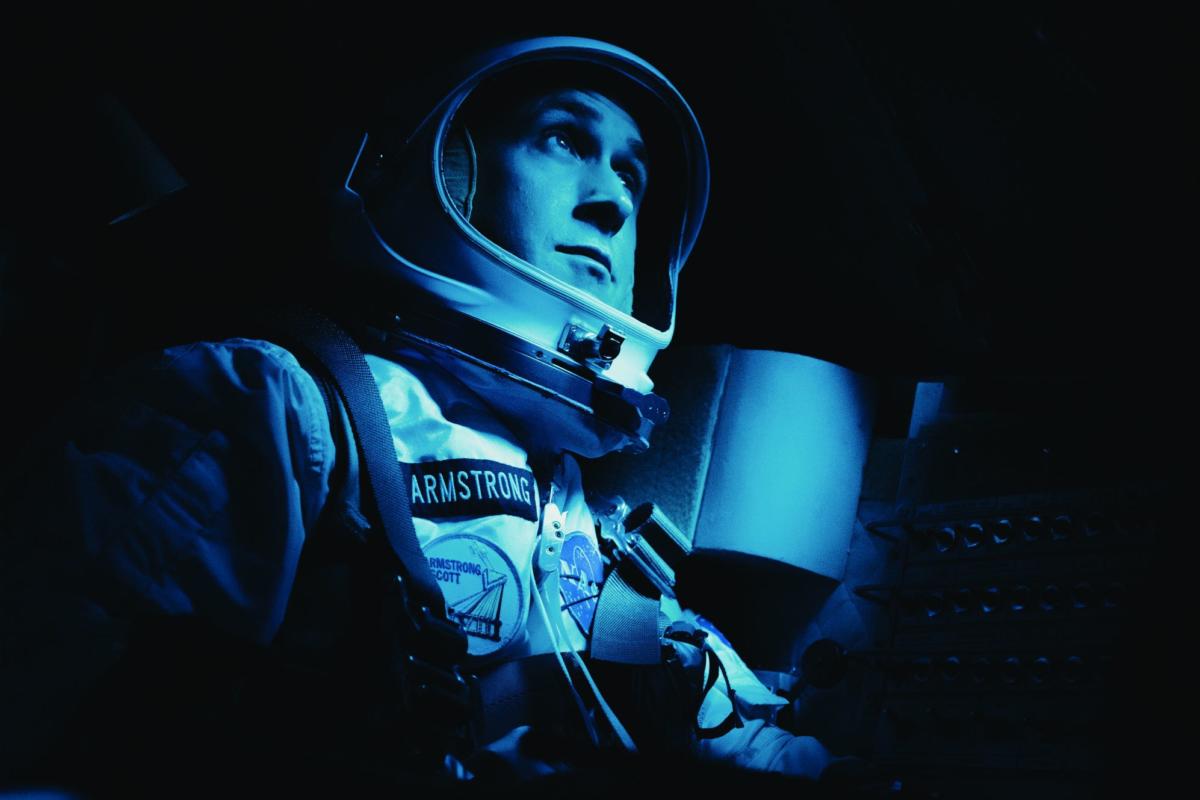How do you make a major motion picture that depicts the greatest achievement in human history? This is a question that has waited nearly 50 years for an answer. A question that Damien Chazelle, the Academy Award winning director of La La Land, has now attempted to answer with First Man.
While this movie does center around the mission to put man on the moon, it also follows Neil Armstrong in his journey from joining the Gemini program and through every professional and personal bump in the road along the way to that momentous event. It chooses to follow Armstrong’s home life and how it is impacted by the stress of the mission, as much as the mission itself.
Ryan Gosling is the actor entrusted to bring Armstrong to the big screen, and he is portrayed as a stoic, calculating man of immense drive and determination. Gosling’s own stoic brand of acting makes him a perfect fit for the role, and he brings a humanity to the legendary figure of Armstrong. Yes, he’s shown as a private, quiet man when it comes to his emotions, but Gosling’s layered performance shows a man that is just about keeping every bit of emotional turmoil hidden away, be it from the pressures of the mission, or the challenges in his own personal life.
While portraying Armstrong as a man who chooses to keep his feelings to himself creates the risk of making him inaccessible to the audience, that burden is taken up by Claire Foy, who plays Armstrong’s wife, Janet. A lot falls on her to show how stressful the whole ordeal is, not just the astronauts themselves, but also the families. Foy’s powerful performance makes for a great foil to Gosling’s more reserved Armstrong, because she’s the one expressing everything he buries deep inside him.
The movie depicts a number of test flights before showing the Apollo mission at the end of the movie, and in all of them, there are barely any shots showing the crafts in motion. The closest you get are shots from cameras mounted on the aircrafts, while most shots are frantically shot from inside the cockpit in close quarters, some of which are from Armstrong’s point of view. This works incredibly effectively to show just how dangerous these flights were. Every vibration, every creak and rattle coming from these aircrafts combine to create some incredibly intense sequences. We often hear about how the Apollo mission was achieved with less computing power than a modern-day smartphone, and these test flight scenes show that.
Of course, we know that Armstrong survives these test flights, but the movie makes it impossible to forget that this man is strapped to a tin can with explosions going off behind his back as he soars into space. One flight scene in particular is shot entirely from inside the cockpit between lift off and it breaking through Earth’s atmosphere, and not only does it make the heart race, it also shows the amazing calmness of these astronauts, as they work in what, to us, seems like impossible conditions. A great tribute not just to Armstrong, but to the great people who flew in these tests to help create history.
But when it came to depicting the Apollo mission itself, the movie wisely chooses to move away from the danger aspect of it and instead focuses on the sheer scale of the event. The up-close, frantic camera shots are replaced by glorious wide shots of the Saturn V rocket lifting off and leaving the Earth’s atmosphere, accented by Justin Hurwitz’s beautiful score. All of the test flight scenes shown before taught us how dangerous this mission is, but the Apollo sequences are captured in a way that appropriately presents how immense this moment really is, and asks us to respect it.
The movie doesn’t shy away from asking the question: was it worth it? Were all the lives lost along the way and the billions spent by the US government worth being able to tell the Soviet Union that America was first? But this movie shows that not only is this an American achievement, it is a human achievement. Humanity has conquered the moon, and this movie understands the significance of that.
Some of the coverage you find on Cultured Vultures contains affiliate links, which provide us with small commissions based on purchases made from visiting our site. We cover gaming news, movie reviews, wrestling and much more.



